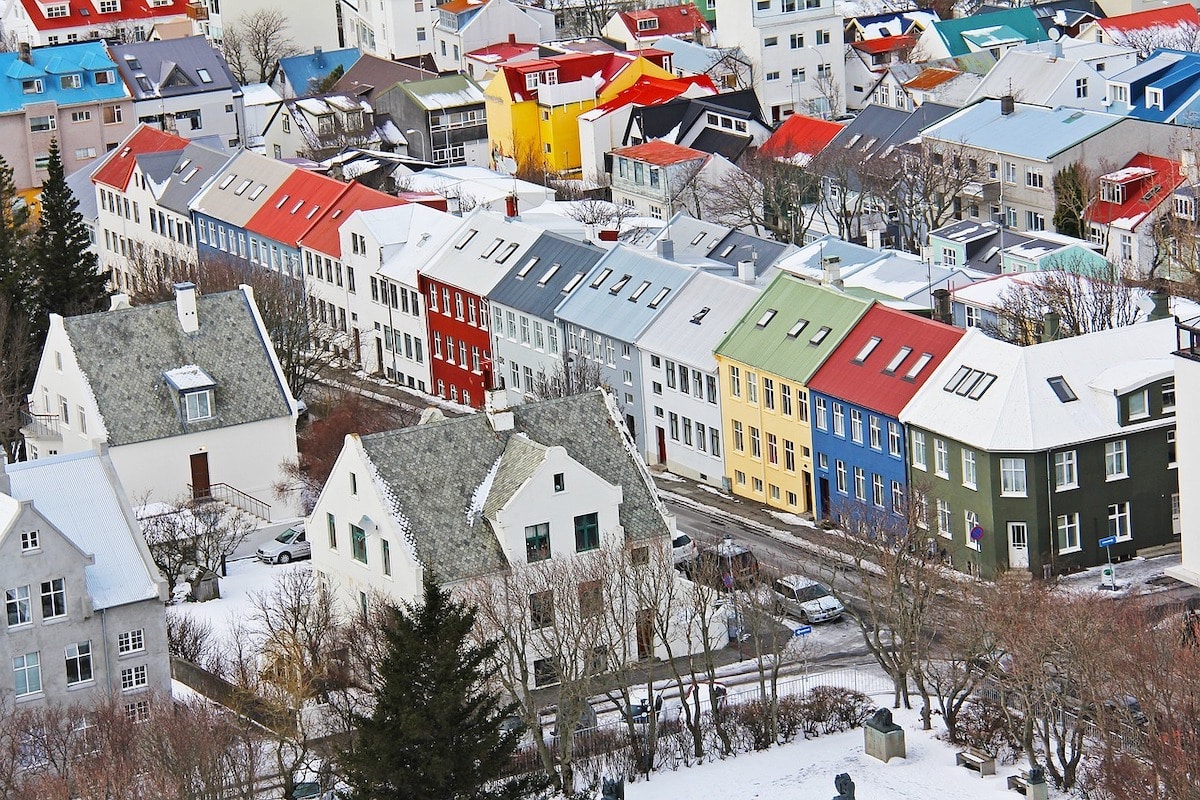The land of fire and ice draws hundreds of thousands of visitors annually to its spectacular island landscapes and it is not surprising why. With stunning scenery at every turn, Iceland is a sight to behold; countless adventures are just waiting for you to enjoy. If Iceland is on your travel itinerary for 2023, you may be wondering when the best time to visit will be. Today, we are breaking the year into quarters with pros and cons.
A Year in Iceland: When to Go
January to March
It probably comes as little surprise that January to March tends to be one of the quietest times to visit Iceland. With temperatures sitting between 20-36 degrees Fahrenheit and the sun only making an appearance from 11 am to 4 pm, those who do not enjoy the cold and dark will not be pleased.
However, the beginning and end of the year are the best times to see the Northern Lights and participate in winter photography. Plus, when March hits, snowshoeing and ice caving become popular sports to participate in before it gets too warm.
April to May
Spring hits Iceland in April, with longer, warmer days finally hitting its landscape. As the season continues, travelers will have fewer chances to see the Northern Lights, but the chances of snow interrupting their trip recede. Due to this, small tour groups will start, taking tourists all over the country once again. In April, there are beautiful bird-watching opportunities, and in May there is whale watching as well. While it is more common in northern Iceland, humpback whales, minkes, and dolphins will arrive in May and sometimes stay as late as August.
June to August
Once June hits, the tourists will begin to pack in as summer activities start and continue coming on strong for the next few months. It is during this time that many travel to Iceland to take advantage of the warm weather and long days. Hiking, walking around the towns, and enjoying nature draws much attention as it is simply gorgeous on every level. During this time, the whole country will be open for travel, including the hardest-to-reach fjords and villages. The bucket list for activities is long, including:
- Horseback riding through the lava fields
- Visiting the glaciers
- Relaxing in a hot spring
- Catching a local festival
- Touring the Golden Circle
September to December
Winter rolls in quickly in Iceland, with the temperature dropping along with the snow levels. Due to the increased magnetic storms around the equinox, September is the best time to view the Northern Lights, so there is often a surge of travelers who wish to see this spectacular natural display. Once October hits, most travel will come to a screeching halt other than right around Reykjavik due to the severe and unpredictable weather. Those who come in October and November are winter outdoor lovers who know how to brave the elements safely, primarily photographers and extreme athletes.
The year isn’t over quite yet. If you are willing to bear the chilling wind and teen temperatures, Iceland hosts incredible holiday festivals honoring winter traditions and the new year!
How to Plan Your Trip
When planning a trip to Iceland, there are a few essential tips you can implement to make your travel easy and enjoyable.
- Book Accommodations Early
If you decide to travel to Iceland during the busy months, you will want to book your accommodations well in advance. Hotels, hostels, and vacation rentals book out quickly!
- Schedule Transportation
Not only should you schedule a group shuttle to the airport and back home for your family here in the USA, but you should also seriously consider hiring bus tours or drivers when you get to Iceland. Unless you are a confident driver, driving in Iceland can be tricky, especially from September to March when ice and snow cover the land.
- Pack Vitamins and Instant coffee
We will be honest and tell you that Iceland is expensive. They import much of their food and materials since they can’t grow or make it there. Coffee and fruit are costly, so we recommend packing vitamins and instant coffee to save some money.
- Pack Your Suitcase Carefully
No matter what time of year you travel to Iceland, you should always pack carefully and bring warm clothes. Even the summer months can have cold spells or chilly nights where a thick jacket and warm socks would be appreciated. Obviously, if you are traveling during the colder seasons, you will want to be well bundled up. Plus, make sure to pack a bathing suit for when you inevitably hit the hot springs and bath houses!
Whether you travel to Iceland in the spring, summer, autumn, or winter, it will be a once-in-a-lifetime trip you will remember forever!
Image by Sharon Ang from Pixabay


